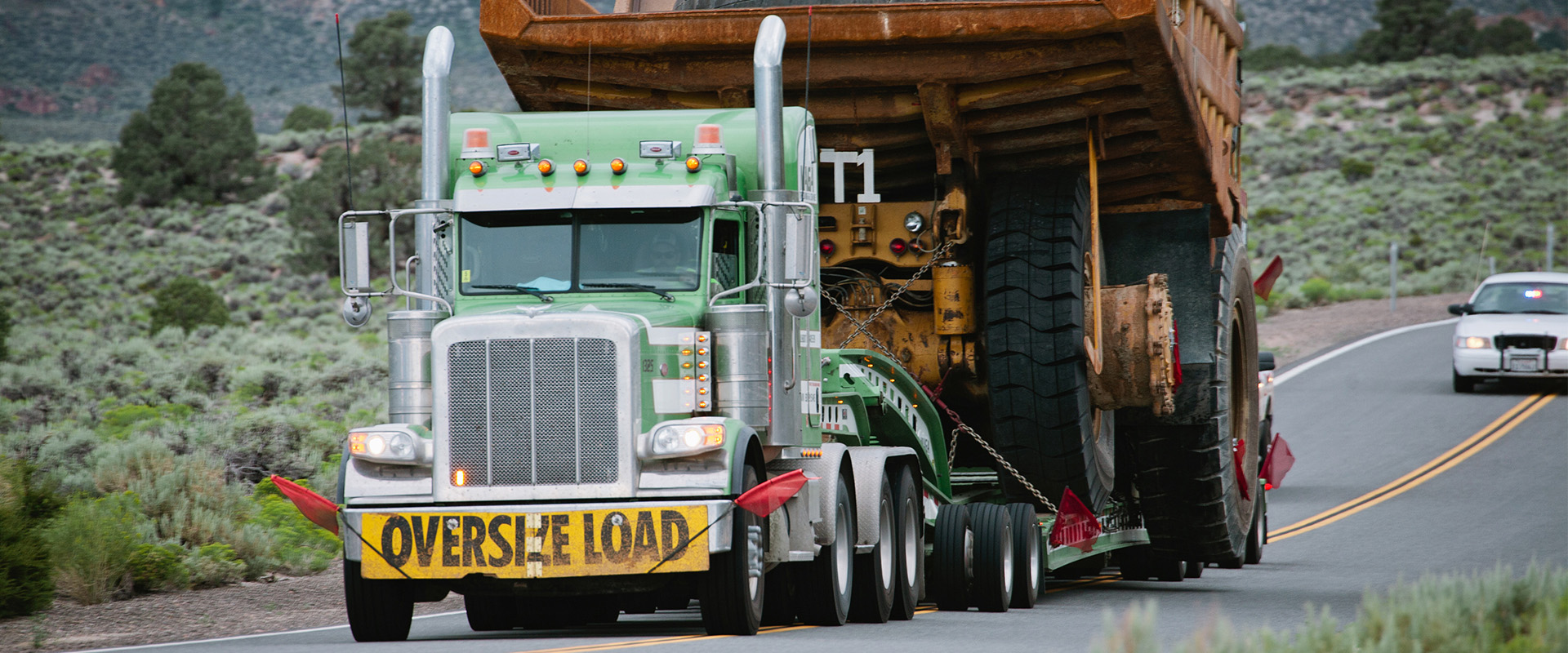
Heavy hauling is a complex process that requires a lot of planning and expertise to execute well. When it comes to transporting oversize or overweight loads, any small misstep in the job could have a huge financial effect.
The key to success is building a strong transportation plan that accounts for the complexity of the job and budget, mitigates risk and prioritizes safety. Whether you’re new to shipping heavy haul loads or you’re just looking to streamline existing processes, there are a few things you should consider.
Complexity
To plan and execute a successful heavy haul job, hundreds of details need to be organized, such as:
-
Determining the exact weight and dimension of the load
-
Securing the right truck and driver
-
Obtaining proper permits
-
Confirming escort cars (where required)
-
Mapping out the most cost-efficient route
-
Acquiring or updating necessary insurance
-
Organizing loading and unloading details (crew, cranes, etc.)
-
Staying up to date on current laws, regulations, restrictions and construction
State Regulations
This process is further complicated by the fact each state has different laws and requirements for oversize loads; the cost for permits varies greatly, some require a 10-day waiting period, and you may not need an escort car in one state but will need one when you cross a state line.
In some New England states, for loads taller than 14-foot 6-inches, you need an escort car with a pole on it to gauge bridge or powerline heights. Whereas, in many western states, oversize regulations become effective at 16 to 17 feet.
Budget
During this complex planning process, the budget for the load is very important. The cost for permits, insurance, loading and unloading, driver rates, etc. add up quickly which is why it’s important to be prepared at every step. For example, to get a big load onto a trailer often requires the service of a large crane. At roughly $1,500 an hour to rent a crane and operator, being unprepared when the crane arrives can easily eat into the contractor’s profit margins on the load.
Routing
Choosing the best route for a super load is more involved than just looking at the map.
Permits
The permits for the load will require you to specify the exact route you take, but choosing that route is not as easy as going the shortest or fastest distance. You may be required to survey the entire route, check bridge heights and watch for detours or road construction that could interfere with the haul.
Roadways and Construction
In some circumstances you will be required to get clearance or permission to use private roadways or co-op owned roadways, which may require waivers or pre-approval. If part of the route runs through a construction site and any portion of the site has unpaved surfaces, those must be examined to make sure they can handle the load properly.
Local Curfews
States and metropolitan areas often have curfews for when a heavy haul or oversize load can run on a highway. Many restrict these loads to daylight hours, which the carrier will need to balance against the hours they have on their logbooks, and they’ll need to plan fuel stops, inspections and mandatory breaks accordingly.
Timing
To prevent excess rental charges, the arrival of the heavy load must be timed to coincide with the crane or any specialized equipment that’s needed to remove and place the load. These considerations must be built into the precheck and planning process to make sure there is safe, legal and clear access to the origin and destination locations.
Planning and Execution
There are two main options for transporting heavy haul or super loads:
-
Planning and executing the shipment process internally, including sourcing and hiring carriers
-
Working with a third party, such as a brokerage, to handle the process for you
Internal Planning
If you plan to execute more than one super move or heavy haul load, you should create a formal process for how your company handles the transportation planning so you do not have to start from scratch each time a similar load needs moved. Develop a method for finding and hiring carriers, following current regulations, building shipping schedules, etc. By formalizing your approach, you will improve overall transportation operations and decrease wasteful spending.
Working with a Brokerage
The other main option is working with a brokerage, which would hire the carrier for you and handle all of the logistics and paperwork associated with the load.
There are a few main benefits of working with a brokerage, because the broker can:
-
Find the perfect fit for a truck and driver from a network of carriers
-
Bring substantial logistics experience and best practices to the process, from planning to execution
-
Assist with insurance issues
-
Identify ways to make your move more time and cost efficient
Ryan Transportation specializes in oversize and heavy haul loads, including loads that are wider than the legal standards of 8 feet, 6 inches in length and taller than 13 feet, 6 inches. These heavy loads can weigh from 45,000 pounds to 160,000 pounds. Ryan Transportation can organize the haul, arrange for all the logistics, screen and qualify the carriers and provide financing for the cost of hauling oversize or overweight loads.